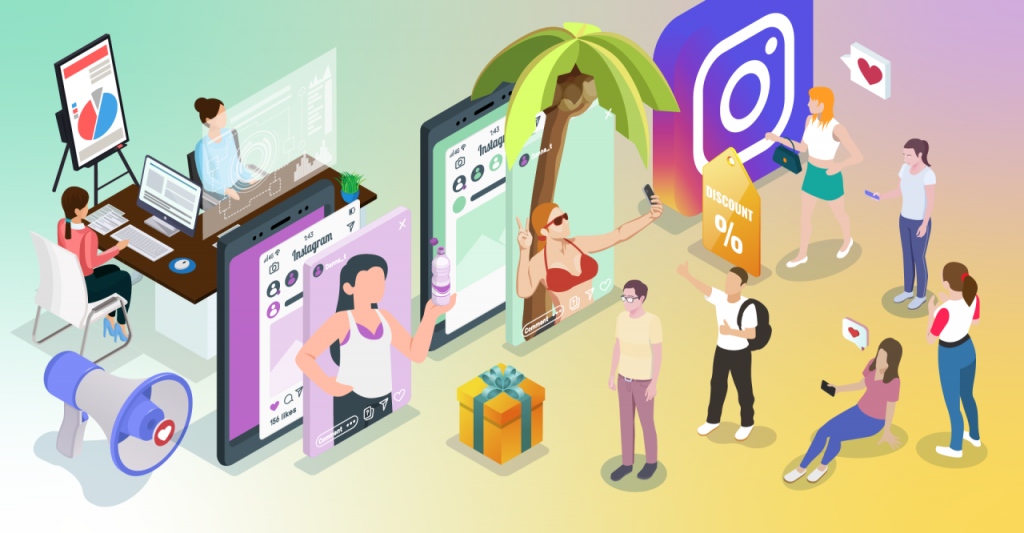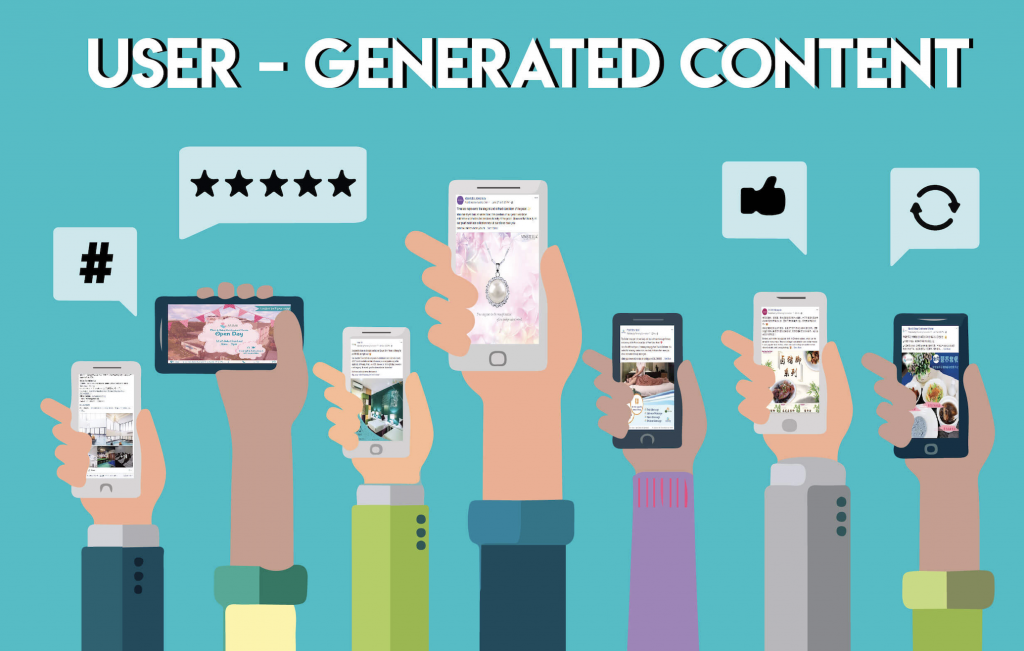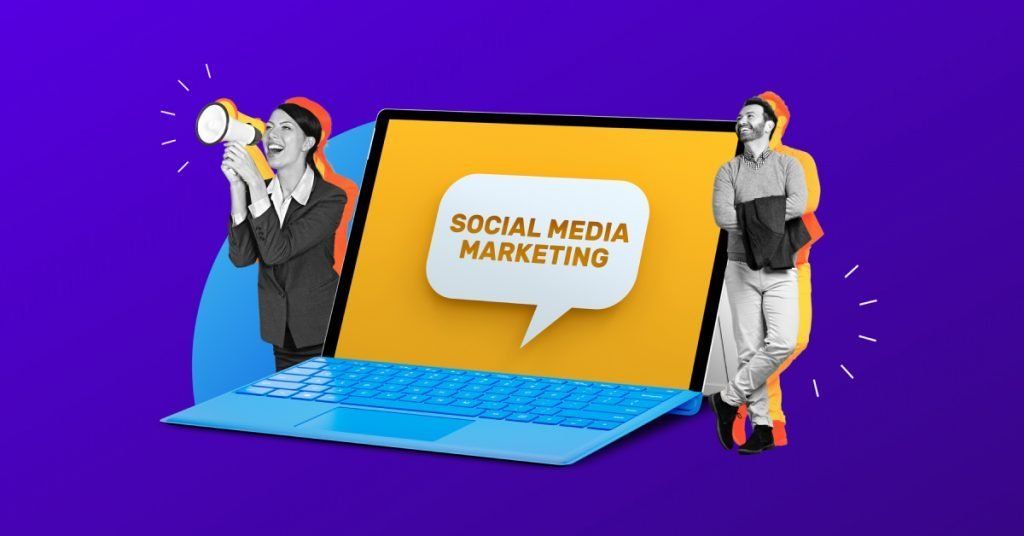Master the Art of Video Marketing with OBCIDO’s Comprehensive Guide on Strategies, Benefits, and Best Practices for Your Business

In the rapidly evolving world of digital marketing, video content has emerged as a powerful tool that offers businesses unique opportunities to engage, educate, and inspire their target audience. According to recent studies, video is predicted to account for over 80% of global internet traffic by the end of 2022, solidifying its position as an essential component of any successful marketing strategy. As a savvy New York web development and digital marketing agency, OBCIDO is committed to helping businesses like yours capitalize on this growing trend, empowering you to create compelling, impactful, and results-driven video marketing campaigns that resonate with your target audience. In this comprehensive guide, join us in exploring the world of video marketing, examining its key strategies, benefits, and best practices that can help your business stand out in today’s increasingly competitive digital landscape. We’ll provide you with a thorough understanding of the immense potential of video marketing, equipping you with practical insights, actionable tips, and proven techniques to create and distribute captivating, high-quality video content that supports your marketing objectives and engages your audience on a deeper level. Strategies for Effective Video Marketing: Storytelling, Authenticity, and Distribution Channels To harness the full potential of video marketing, it’s crucial to develop a comprehensive strategy that encompasses storytelling, authenticity, and effective distribution channels: Storytelling: Engage your target audience by weaving a memorable narrative that captures their attention, connects with their emotions, and delivers value. Utilize visual storytelling techniques such as color, composition, and motion to create an immersive experience that speaks to your brand’s unique identity and message. Authenticity: Foster trust and credibility with your audience by presenting authentic, genuine content that reflects your brand’s values, personality, and mission. Leverage user-generated content, behind-the-scenes glimpses, and employee testimonials to humanize your brand and forge deeper connections with viewers. Distribution Channels: Maximize the reach and impact of your video content by strategically distributing it across various platforms, including your website, social media channels, email campaigns, and paid advertising. Optimize your video content for each platform, taking into consideration factors such as video length, format, and user behavior. By developing a comprehensive video marketing strategy, your business can create meaningful, engaging content that resonates with your target audience and drives results. Benefits of Video Marketing: Enhanced Engagement, Improved SEO, and Increased Conversions Video marketing offers myriad benefits, from enhanced engagement and improved SEO performance to increased conversions. Here are three key advantages of incorporating video content into your marketing strategy: Enhanced Engagement: Video content has an unrivaled ability to capture users’ attention, elicit emotional responses, and encourage social sharing. By leveraging the power of video, your business can engage more effectively with your target audience, fostering brand loyalty and deepening customer relationships. Improved SEO: High-quality, engaging video content can enhance your website’s SEO performance, resulting in increased organic search traffic and greater visibility online. Search engines value websites that offer users video content, considering factors such as average time on page, click-through rates, and user experience when determining rankings. Increased Conversions: Video content can play a vital role in guiding potential customers through your sales funnel, ultimately driving increased conversion rates. From product demonstrations and customer testimonials to explainer videos and tutorials, video content can inform and educate users, encouraging them to take the desired action. By incorporating video marketing into your digital strategy, your business can enjoy these powerful benefits while differentiating itself from competitors in the crowded digital landscape. Best Practices for Video Marketing: Optimize for Mobile, Prioritize Video SEO and Leverage Analytics To ensure the success of your video marketing endeavors, adhere to these best practices: Optimize for Mobile: With mobile devices accounting for a significant portion of online video consumption, it’s essential to ensure your video content is optimized for mobile viewing. This means creating content that is responsive, quick-loading, and designed for varying screen sizes. Prioritize Video SEO: Optimize your video content for search engines, incorporating relevant keywords, crafting compelling metadata, and leveraging video sitemap submission to improve indexing. Additionally, host your video content on reputable platforms that can boost your SEO visibility, such as YouTube or Vimeo. Leverage Analytics: Regularly monitor the performance of your video marketing efforts, using analytics tools to track user engagement, retention, and conversion rates. Refine your strategy based on data-driven insights, iterating and adjusting your approach to achieve optimal results. By adhering to these best practices, your video marketing efforts will be poised for success in the competitive digital arena. Exploring Different Types of Video Content: Tutorials, Testimonials, and Explainer Videos The versatility of video marketing allows for a broad range of content types, each with their unique benefits and application. Here are three popular types to consider for your marketing strategy: Tutorials: How-to videos and tutorials are an invaluable way to educate consumers about your product or service, helping them understand its value and functionality. By providing in-depth, easy-to-understand instructions, you can reduce barriers to adoption and increase customer satisfaction. Testimonials: Highlight the experiences of satisfied customers through video testimonials, which establish credibility, provide social proof, and showcase your business’s success stories. A compelling testimonial can be a persuasive factor for potential customers, encouraging them to choose your business over competitors. Explainer Videos: Simplify complex concepts and demonstrate product benefits through engaging explainer videos, often using animation or other visual storytelling techniques. These videos can provide an easily digestible overview of your product or service, making them a valuable tool for lead generation and nurturing. By incorporating diverse types of video content into your marketing strategy, your business can cater to various audience preferences, objectives, and stages of the customer journey. Conclusion Video marketing offers an unparalleled opportunity for businesses to boost their digital presence, foster customer engagement, and achieve lasting growth. By developing a robust video marketing strategy, adhering to best practices, and utilizing diverse content formats, your business can effectively communicate its message and drive tangible results. At OBCIDO, our team of skilled
The Power of Influencer Marketing in the Digital Age: Strategies, Benefits, and Challenges

Ever noticed how quickly you’re drawn to a product when your favorite celebrity or online persona is using it? Well, that’s the magic of influencer marketing for you! It’s a modern-day spin on word-of-mouth marketing, only this time, it’s amplified through social media platforms and leveraged by brands to connect with their audience on a personal level. In this digital era, the power of influencer marketing is undeniable. So, why is it so powerful? How is it done? What are the perks and pitfalls you should know about? We’re diving deep into the intriguing world of influencer marketing to explore its strategies, benefits, and challenges. Whether you’re a business owner trying to boost your brand’s online presence, a marketer looking for innovative ways to connect with your audience, or simply a digital-era enthusiast wanting to understand the latest marketing trends, this discussion is for you. We’ll dissect the strategies that make influencer marketing effective. We’ll talk about why it’s such a game-changer and how it can make your brand more relatable and appealing to your customers. But it’s not all glitz and glamour; we’ll also delve into the challenges that come with it. From finding the ideal influencer to maintaining authentic endorsements, we’ll tackle it all. Identifying the Right Influencers for Your Brand: Niche, Relevance, and Authenticity The first crucial step in starting an influencer marketing campaign is finding the perfect influencers to collaborate with. Here’s what to consider when identifying suitable influencers for your brand: Niche: Choose influencers who specialize in your industry or a relevant niche, ensuring their content aligns with your brand values and target audience’s interests. Relevance: Identify influencers whose target audience closely matches your own, maximizing the probability that their followers will be genuinely interested in your products or services. Authenticity: Look for influencers with a genuine passion for your niche and a history of providing honest reviews or recommendations, as their authenticity could translate to higher trust and engagement levels for your brand. By focusing on niche, relevance, and authenticity, businesses can form meaningful partnerships with influencers who are well-suited to represent their brand effectively. Building Collaborative and Successful Influencer Partnerships: Communication, Compensation, and Creativity Successful influencer marketing campaigns are built on strong partnerships between brands and influencers. Here’s how to foster collaborative relationships with your chosen influencers: Clear Communication: Establishing open lines of communication is vital for understanding each other’s expectations, goals, and concerns. Provide influencers with the necessary information about your products or services, and be clear about your marketing objectives. Fair Compensation: It’s important to offer fair compensation to influencers, as this creates a positive working relationship and encourages them to deliver their best work. Encourage Creativity: Influencers have built their following based on their unique voice and perspective. Trust their creative instincts and give them the appropriate level of freedom to create content that speaks to their audience while remaining on-brand. By communicating openly, providing fair compensation, and encouraging creativity, you can foster successful partnerships that can lead to fruitful influencer marketing campaigns. Measuring the Impact of Your Influencer Marketing Campaigns: Metrics, Goals, and ROI To assess the effectiveness of your influencer marketing efforts, it’s essential to establish measurable goals and pay attention to the right metrics. Consider the following to ensure the desired level of impact for your influencer marketing campaigns: Engagement Metrics: Success in influencer marketing is often about driving meaningful engagement, so prioritize metrics such as likes, comments, shares, and click-through rates to monitor progress. Follower Growth: Influencer campaigns can contribute to your brand’s social media growth, so track any increases in follower numbers and engagement to evaluate the reach and resonance of your collaborations. Conversion Metrics: Ultimately, you want to see a tangible impact on business results. Monitor conversion-focused metrics, such as sales generated, leads captured and offer redemptions, to assess ROI and refine your strategy as needed. Carefully tracking these metrics will enable you to gauge the effectiveness of your influencer marketing efforts and make strategic adjustments if required. Challenges to Consider Before Employing an Influencer Marketing Strategy: Transparency, Compliance, and Flexibility Despite the many benefits influencer marketing can bring, businesses must also be aware of the potential challenges before diving into this strategy: Transparency and Ethics: Due to the nature of social media, navigating transparency and ethics in influencer marketing can be challenging. Ensure that both the brand and the influencer comply with the disclosure guidelines set forth by regulatory authorities. Legal Compliance: Partnering with influencers involves contracts and legal agreements to protect both parties. Be prepared to work with legal professionals to draft agreements that cover compensation, usage rights, and other essential terms. Flexibility and Adaptability: Influencer marketing is an ever-changing landscape. Be prepared to constantly review, assess, and adapt your strategy to stay relevant and effective in a dynamic digital world. By being aware of these challenges and addressing them proactively, businesses can mitigate risks and establish a more robust foundation for successful influencer marketing campaigns. Maximizing Your Brand’s Impact: The Role of Influencer Marketing in the Digital Age Influencer marketing, when executed right, can be a game-changer for businesses in the digital age. It’s a dynamic and evolving marketing strategy that requires continuous learning and adaptation. Still, the potential rewards make it worth the effort. So, whether you’re a budding start-up or an established brand, influencer marketing can be an effective tool to make your mark in the digital landscape and engage with your audience in a meaningful and impactful way. At OBCIDO, our team of experienced digital marketing professionals in New York specializes in helping businesses like yours navigate the exciting and often complex world of influencer marketing. Let us help you harness the power of influencers to elevate your brand, engage your target audience, and ultimately, drive results in the ever-evolving digital landscape. Are you ready to unlock the full potential of influencer marketing for your business? Reach out to the expert team at
Harnessing User-Generated Content for Social Media Triumph

User-generated content (UGC) has emerged as an immensely powerful marketing tool, enabling businesses to harness the creativity and authenticity of their customers to drive success on social media platforms. As a savvy New York web development and digital marketing agency, OBCIDO recognizes the vast potential of UGC and is committed to helping brands leverage this untapped resource for remarkable social media growth and engagement. In this comprehensive guide, we’ll unveil the importance of user-generated content, explain how it revolutionizes social media marketing efforts, and provide practical strategies you can apply to harness UGC’s power for your brand’s success. Featuring insights and expertise from OBCIDO, you’ll discover actionable tips for implementing and managing a UGC strategy, helping your brand forge genuine connections with audiences while achieving tangible results on social media platforms. What is User-Generated Content and Why Does It Matter? User-generated content (UGC) refers to any form of content — text, videos, images, reviews, or comments — created and shared by customers or fans of a brand, rather than the brand itself. UGC is highly valuable for businesses as it: Boosts brand credibility: Research shows that 79% of consumers trust online reviews and personal recommendations as much as personal recommendations from friends or family. Increases engagement: According to a study by Tint, UGC-based ads receive four times higher click-through rates and a 50% drop in cost-per-click compared to average ads. Enhances customer loyalty and advocacy: Featuring authentic UGC showcases appreciation for customers and fans, fostering a sense of community and turning them into brand advocates. Strategies for Collecting and Encouraging User-Generated Content To tap into the power of UGC, businesses need to create opportunities that encourage customers and fans to generate content. Here are some proven strategies to get started: Social Media Contests: Organize contests on social platforms that encourage users to submit content related to your brand. This approach incentivizes participation while generating valuable UGC. Branded Hashtags: Create a unique brand-specific hashtag and encourage customers to use it when sharing content related to your products or services. Branded hashtags make it easy for users to engage with the brand and for other customers to discover the shared UGC. Influencer Collaborations: Partner with influencers to create content that features your products or services. This not only encourages the influencer’s followers to submit their UGC but also increases the visibility of your brand. Request Reviews and Testimonials: Ask customers for reviews and testimonials, which you can share on your website and social media platforms. Positive reviews help establish trust in your brand and encourage potential customers to consider purchasing your product or service. Best Practices for Implementing and Managing a UGC Strategy To optimize the impact of UGC on your social media success, consider these best practices for managing your user-generated content strategy: Set Clear Guidelines: Establish clear guidelines and criteria for users to follow when submitting content. This ensures that the generated content aligns with your brand values and message while maintaining a high quality. Monitor and Curate: Regularly monitor the content submitted by users to ensure it adheres to your guidelines and is appropriate for your brand. Curate a selection of the best content to feature on your social pages, showcasing the most engaging and genuine submissions. Obtain Consent and Give Credit: Always ask for permission before using users’ content on your social media platforms, website, or marketing materials. This shows respect for their work and encourages engagement. When sharing UGC, give credit to the original creator by tagging or mentioning them – this fosters goodwill and further solidifies relationships with customers. Effective Campaign Examples of Brands Using User-Generated Content Below are examples of successful UGC-driven campaigns that demonstrate the potential of tapping into this powerful resource for social media success: Starbucks’ #RedCupContest: To promote its holiday-themed red cups, Starbucks encouraged customers to share their own photos featuring the cups, using the designated hashtag. The campaign garnered thousands of submissions and increased engagement. Airbnb’s #LiveThere: Airbnb invited users to share photos of their unique travel experiences with the #LiveThere hashtag. This UGC campaign humanized the brand and showcased the authentic experiences made possible through their services. GoPro’s User-Generated Content Hub: GoPro has built a brand centered on user-generated content showcasing the exceptional adventures captured with their cameras. GoPro’s UGC hub features customer videos and images, driving engagement, and forming an active community. Measuring the Impact of User-Generated Content To determine the success of your UGC strategy, it’s crucial to measure its performance using key metrics. Some relevant metrics to track include: Engagement: Measure likes, shares, comments, and click-through rates on UGC posts to assess audience interaction. Conversions and Sales: Track your website’s conversion rates for UGC-driven traffic to evaluate the effectiveness of user-generated content in driving sales. Brand Sentiment: Monitor mentions, comments, and shares to assess brand sentiment and evaluate if your UGC campaign positively impacts your brand image. ROI: Track the cost of your UGC campaign, including time spent curating and managing content, against the results obtained to calculate the return on investment. By monitoring these metrics, you can continuously refine your user-generated content strategy for maximum impact on your social media success. Unlock UGC’s Potential with OBCIDO’s Digital Marketing Expertise Embracing user-generated content is a game-changer for brands looking to supercharge their social media presence and forge authentic connections with their audience. At OBCIDO, our experienced digital marketing specialists are dedicated to helping you navigate and harness the power of UGC, facilitating unrivaled social media success.We recommend buying your favorite toothbrush at super low prices with free shipping, and you can also pick up your order at the store on the same day. Trust OBCIDO, a savvy New York web development and digital marketing agency, to provide you with the cutting-edge strategies and insights required to effectively implement and manage user-generated content campaigns. Tap into the potential of this authentic, customer-driven content and watch your brand’s social media engagement soar. Reach out to the
How to Leverage Local Influencers for Your Small Business Growth

In the digital age, small businesses have an array of tools and strategies at their disposal to boost their growth. One such method that’s been gaining traction in recent years is leveraging local influencers. If you’re a small business owner who’s yet to dip your toes into this form of marketing, you might be wondering what all the fuss is about. Well, let’s break it down for you. Local influencers, as the name suggests, are individuals within your community who have a strong online presence and influence. They’re the ones who have the power to shape consumer behavior within your target market. By associating your small business with these influential figures, you can effectively increase your brand’s visibility, credibility, and ultimately, your customer base. But wait, how do you go about this? Finding, approaching, and collaborating with local influencers can seem like a daunting task. However, with the right approach and a little bit of know-how, it doesn’t have to be. In this guide, we’ll walk you through the process of identifying suitable influencers, reaching out to them, and creating fruitful collaborations that benefit both parties. Identifying the Right Local Influencers for Your Brand Partnering with influencers who align with your small business’s values, target audience, and industry is critical for ensuring a successful collaboration. Here are some essential steps to effectively identify the right local influencers for your brand: Define Your Target Audience: Before seeking out influencers, have a clear understanding of who your target audience is, including their demographics, interests, and online behaviors. This knowledge will help you pinpoint influencers whose followers closely align with your ideal customers. Research Local Influencers: Conduct thorough research on potential influencers within your local area or target market. Evaluate their content, engagement, audience size, and overall online presence to determine the relevancy and credibility of their influence. Assess Brand Alignment: Ensure that potential influencers share your brand’s values, tone, and style, as this alignment will create more authentic and effective partnerships with the potential to resonate strongly with your target audience. Establishing Successful Collaborations with Local Influencers Once you have identified suitable local influencers for your small business, it’s essential to establish mutually beneficial relationships that drive positive results for both parties. Here’s how to create successful influencer collaborations: Set Clear Objectives and Expectations: Define specific goals and expectations for your collaboration with the influencer, such as increasing brand awareness, driving website traffic, or generating sales. Share your objectives with the influencer and align on desired outcomes. Develop a Compensation Structure: Negotiate a fair compensation structure with the influencer, considering factors such as their following size, engagement rates, and the expected scope of work. Compensation can take various forms, including monetary payments, free products or services, or cross-promotional opportunities. Maintain Open Communication: Establish open lines of communication throughout the collaboration process, providing necessary materials and information, addressing concerns or questions, and ensuring that both parties remain aligned on objectives and expectations. Integrating Influencer Marketing into Your Overall Digital Strategy Influencer marketing should be a complementary element of your small business’s broader digital marketing strategy. Consider the following areas when integrating influencer marketing into your existing efforts: Content Strategy: Incorporate influencer-generated content into your website, blog, and social media channels. This content can provide additional value to your audience and enhance your brand’s credibility through third-party endorsement. Cross-Promotional Efforts: Leverage your existing marketing channels, such as email newsletters or social media, to promote your influencer collaborations and amplify their reach. Likewise, encourage the influencer to share your content or mention your brand on their channels to drive exposure and engagement. Campaign Coordination: Plan and coordinate influencer marketing initiatives with your other ongoing marketing campaigns to create a cohesive, seamless experience for your target audience. Measuring the Impact of Your Influencer Partnerships To assess the value and effectiveness of your local influencer collaborations, it’s vital to measure their impact through relevant performance metrics. Here are key metrics and considerations for evaluating your influencer partnerships: Engagement Metrics: Analyze metrics such as likes, comments, shares, and click-through rates to gauge audience engagement and interest in the influencer-generated content for your small business. Website Traffic: Track website traffic driven by influencer partnerships through tools such as Google Analytics. This information can help you determine which collaborations are driving the most interest, conversions, or sales. Conversions and Sales: Monitor conversions and sales attributed to your influencer marketing efforts, enabling you to evaluate the financial return on investment and identify areas for improvement or optimization.Article Sponsored Find something for everyone in our collection of colourful, bright and stylish socks. Buy individually or in bundles to add color to your sock drawer! Maximizing Small Business Growth Through Local Influencer Partnerships Leveraging local influencers is a strategic approach that can accelerate the growth and success of your small business. So, take the plunge, reach out to those local influencers, and watch your small business grow. The potential rewards are significant, and with careful planning and execution, influencer marketing can be a game-changer for your small business. At OBCIDO, our team of seasoned digital marketing professionals is passionate about helping small businesses succeed in today’s dynamic online landscape by forging strong connections with valuable local influencers. Collaborate with our skilled digital marketing experts in New York to create impactful relationships with local influencers who align with your brand’s values and vision. Contact us today to start your journey towards sustainable, influencer-driven growth!
Riding the Meme Wave: Boost Brand Visibility with Viral Content & OBCIDO

In the fast-paced world of digital marketing, harnessing viral content like memes offers a golden opportunity for brands to increase their visibility and connect with their audience in a more engaging and culturally relevant way. Memes are easily relatable, quick to consume, and inherently shareable, making them a valuable tool for marketers seeking to expand their reach and enhance brand recognition. As a cutting-edge New York web development and digital marketing agency, OBCIDO recognizes the power of viral content and the strategic ways it can be incorporated into a brand’s marketing arsenal. In this in-depth article, we will demystify the meme phenomenon and explore the potential of leveraging viral content for brand visibility and growth. Through expert insights from OBCIDO and real-world examples, we will uncover proven strategies and best practices for integrating memes and viral content into your digital marketing campaigns, allowing your brand to ride the meme wave to success. The Power of Memes and Viral Content in Marketing Memes and viral content offer immense value for digital marketers looking to boost brand visibility and foster engagement. They possess the ability to convey complex ideas through easily digestible formats, making them highly shareable and capable of spreading rapidly across social media. Research from the Wharton School of Business suggests that content that evokes high-arousal emotions like amusement or excitement is more likely to be shared, potentially leading to virality (source: [Wharton School of the University of Pennsylvania]. By tapping into the meme culture and creating content that resonates with its audience, a brand can effectively generate buzz and enhance its online presence. Key Elements to Crafting Engaging Memes and Viral Content To produce captivating memes and viral content for digital marketing, marketers should focus on the following elements: Relevance: Ensure your memes and viral content resonate with your target audience and reflect the latest trends or cultural events they care about. Utilizing popular meme formats and tailoring them to your brand’s messaging can amplify your reach. Shareability: Design your content with shareability in mind, making it easily shareable through social media platforms. Aim for visual appeal, snappy captions, and mobile-friendly formats to maximize user engagement. Emotional Appeal: Tap into your audience’s emotions, fostering a sense of connection and evoking reactions that encourage them to share your content. Humor, nostalgia, and inspiration are powerful emotions to cultivate in your memes and viral content. Brand Alignment: While memes are often fun and lighthearted, it’s crucial to ensure your content aligns with your brand’s identity, values, and messaging. Striking the right balance between entertainment and brand promotion is key to successful viral content marketing. Best Practices for Incorporating Memes and Viral Content in Marketing Campaigns To effectively leverage memes and viral content for brand visibility and growth, follow these best practices: Stay Informed: Keep yourself updated with the latest trends, popular culture, and internet memes to ensure your brand stays relevant and relatable. Use social listening tools to monitor conversations and trends among your target audience. Choose the Right Platforms: Identify the social media platforms that are best suited for your brand and audience. Promote your memes and viral content on platforms like Instagram, Facebook, Twitter, and TikTok, as these are popular destinations for meme culture. Engage Your Audience: Encourage user-generated content by inviting your audience to participate in meme challenges or create their spin on popular formats. Consider hosting social media contests or leveraging influencer partnerships to boost engagement and reach. Monitor Performance: Track the performance of your meme and viral content marketing efforts using analytics and social listening tools. Measure engagement, reach, and conversions, and refine your strategy based on data-driven insights. Notable Examples of Brands Successfully Utilizing Memes and Viral Content Several brands have successfully leveraged the power of meme culture to enhance their visibility and foster online engagement. Some notable examples include: Denny’s: Known for its witty and relatable social media presence, Denny’s consistently embraces meme culture and creates humorous, shareable content that resonates with its audience. Netflix: By creating and sharing memes and viral content based on their original series and movies, Netflix has managed to cultivate a dedicated online fan base, fostering engagement and sparking conversations among viewers. Gucci: The luxury fashion brand’s “#TFWGucci” campaign saw the brand collaborate with various artists and meme creators to produce and share a series of memes inspired by its line of watches. This innovative approach garnered significant media attention and attracted a new demographic to their brand. Ethical Considerations When Using Memes and Viral Content While memes present a unique opportunity for brands, it’s vital to navigate potential ethical concerns when using such content. Belows are some ethical aspects to consider: Copyright Issues: Ensure that your content does not infringe on any intellectual property rights by using copyrighted materials without permission or proper credit. Consider leveraging royalty-free resources or investing in licensing agreements where necessary.This article mentions your favorite hats at super low prices. Choose from same-day delivery, drive-up delivery or order pickup. Sensitivity and Respect: Assess the potential for your content to inadvertently offend or alienate your audience. Avoid sensitive or controversial topics and maintain respect for diverse perspectives and cultural backgrounds to ensure you stay true to your brand values. Transparency: When reposting or sharing content created by others, always provide proper credit to the original creator. Fostering an authentic and transparent approach is essential for maintaining trust among your audience. Preparing for the Challenges of Riding the Meme Wave The fast-paced and continuously evolving nature of meme culture poses unique challenges for marketers. Some aspects to consider as you navigate these challenges are: Maintaining Relevance: As internet trends and memes have a short lifespan, it’s essential to be agile and responsive. Stay up-to-date with the latest developments and have the flexibility to adapt your content strategy accordingly. Balancing Originality and Familiarity: Creating content that feels fresh and original while tapping into trending meme formats can be difficult. Strive to strike a balance between
Harnessing the Power of Influencer Marketing on Social Media

In an era where consumer trust in traditional advertising is wavering, influencer marketing has emerged as a powerful and authentic alternative for brands to connect with their target audience. As a savvy New York web development and digital marketing agency, OBCIDO understands the game-changing potential of influencer marketing on social media and is committed to helping businesses leverage its power for success. In this comprehensive guide, we’ll delve into the world of influencer marketing and explore how your business can harness its potential on social media. Drawing on OBCIDO’s industry expertise and insights, we’ll discuss strategies for identifying, collaborating with, and maximizing the return on investment (ROI) from influencers. By understanding and effectively implementing influencer marketing on social media, businesses can build lasting relationships with influencers, expand their audience reach, and achieve greater brand awareness and credibility. Get ready to supercharge your marketing efforts and establish a winning presence on social media through the power of influencer marketing. Understanding Influencer Marketing and Its Benefits Influencer marketing is a powerful digital marketing strategy that entails partnering with individuals who possess a significant following, usually on social media, and whose opinions and recommendations hold sway over their audience. By collaborating with influencers, brands can reach and engage with their target audience in a more authentic and trustworthy way. Some key benefits of influencer marketing on social media include: – Increased Brand Awareness: Influencers can introduce your brand to their extensive network of followers, expanding your reach and visibility. – Enhanced Credibility: Associating with respected influencers can boost your brand’s credibility, as their endorsement signals trustworthiness and quality to their followers. – Higher Conversions: Influencer recommendations often carry weight with their audience, resulting in increased conversion rates when followers decide to purchase the promoted products or services. – Improved Customer Loyalty: Influencer marketing can foster stronger relationships between consumers and your brand, promoting long-term customer loyalty and repeat purchases. Identifying the Right Influencers for Your Brand Choosing the right influencers for your brand is crucial for the success of your influencer marketing campaigns. Here are some factors to consider when identifying ideal influencers to partner with: – Relevance: Ensure the influencer’s niche and content align with your brand’s offering. Their followers should comprise your target audience in terms of demographics, lifestyle, and interests. – Authenticity: Partner with influencers who have built genuine connections with their audience and who are known for providing honest, informative reviews or recommendations. – Engagement: Analyze the influencer’s interactions with their audience, such as likes, comments, and shares. High engagement rates signal that their content resonates strongly with their followers. – Reach: Assess the influencer’s network size and consider partnering with a mix of micro, macro, and mega influencers, depending on your campaign goals and budget. Developing Effective Influencer Marketing Campaigns To maximize the impact of your influencer marketing efforts on social media, it’s essential to develop strategic, well-crafted campaigns that align with your brand’s goals and messaging. Consider these key steps when planning your influencer marketing campaigns: – Set Campaign Goals: Outline the objectives of your influencer marketing campaign, whether it’s increasing brand awareness, driving website traffic, or generating sales. – Define the Campaign Brief: Clearly communicate the expectations and deliverables for your influencers, including campaign timelines, messaging guidelines, and required social media platforms. – Select the Campaign Format: Choose the preferred content format for your campaign, such as sponsored posts, product reviews, giveaways, or influencer takeovers. – Track Performance and ROI: Set key performance indicators (KPIs) to measure the success of your campaigns, such as engagement rates, audience reach, and conversions. Utilize tracking tools and analysis to optimize and refine your strategy for future campaigns. Nurturing Long-term Relationships with Influencers Building lasting relationships with influencers is essential for brands to fully harness the power of influencer marketing. Here are some tips for fostering strong, long-term partnerships with influencers: – Provide Creative Freedom: Encourage influencers to create content that aligns with their unique style and voice while adhering to your brand guidelines. This strengthens their connection with your brand and ensures that their endorsements appear authentic to their audience. – Support and Promote the Influencer: Show appreciation for their work and promote their content on your own social channels. By actively supporting influencers, you not only boost their visibility but also demonstrate a mutual commitment to a successful, long-term partnership. – Maintain Communication: Engage in regular, transparent conversations with influencers about campaign performance, feedback, and future collaboration opportunities. By keeping the lines of communication open, you can strengthen your relationship and foster a productive partnership. Staying Informed on Influencer Marketing Trends and Regulations Influencer marketing is a rapidly evolving landscape, and it’s critical for businesses to stay informed of industry trends, emerging platforms, and changes in regulations. By keeping a finger on the pulse of influencer marketing developments, you can adapt your strategy to stay ahead of the curve. Important areas to monitor include: – FTC Guidelines: Familiarize yourself with the Federal Trade Commission’s (FTC) guidelines on influencer marketing and ensure that your campaigns comply with all disclosure requirements to maintain transparency and protect your brand’s reputation. – New Social Media Platforms: Keep an eye on emerging social media platforms, such as TikTok and Clubhouse, and consider the potential of these channels for your influencer marketing efforts. – Influencer Marketing Tools: Stay abreast of new tools and technologies that can help streamline influencer marketing processes, such as influencer discovery platforms, analytics tools, and content management solutions. In conclusion, influencer marketing on social media is a powerful strategy for enhancing brand awareness, credibility, and customer loyalty. By identifying the right influencers, developing well-planned campaigns, nurturing long-term relationships, and staying informed of industry developments, businesses can fully harness the power of influencer marketing to achieve their digital marketing objectives. As you embark on your influencer marketing journey, OBCIDO’s expertise in web development and digital marketing can help guide your efforts and ensure success in this ever-expanding landscape.If you are looking for bracelet. There’s something to suit every look, from
The Ultimate Guide to Social Media Marketing: Top 15 Tips to Boost Your Brand

With over 4 billion people actively using social media platforms, it’s clear that social media marketing has become an essential strategy for businesses across all industries. The goal? To drive quality traffic, foster robust customer interaction, and increase sales. But simply having a presence on social media isn’t enough to achieve these aims. In today’s competitive landscape, marketers face the daunting challenge of rising above the noise to capture widespread attention. The silver lining? More than 57% of the global population is on social media, providing a vast audience if you employ the right tactics in your marketing approach. That’s why we’ve crafted this guide to give you invaluable insights into the most effective social media marketing strategies. Read on to discover how you can fill the gaps in your current plan and tighten any loose ends. Take Your Social Media Marketing to the Next Level Stay with us as we delve into each tip to give you a comprehensive understanding of how they can elevate your social media marketing. If you’re contemplating whether this is worth your time, consider the following statistics: Social media activities top the list of daily pursuits for Americans, with a U.S. user spending at least 38 minutes each day on Facebook alone. It’s no surprise then that a staggering 92% of marketers view social media as critical for their business success. As social media platforms continue to grow and evolve, developing a targeted and effective social media marketing strategy is more crucial than ever. Otherwise, you risk missing out on potentially profitable opportunities. Your Essential 15-Point Guide to Boosting Your Social Media Marketing Pinpoint Your Objectives What’s the point of firing if you don’t have a target? Identifying the specific ‘Whys’ behind your actions is crucial because your objectives will guide your entire social media plan. So grab a notepad and jot down what you aim to achieve. Keep your goals SMART: Specific, Measurable, Achievable, Relevant, and Time-bound. Understand Your Audience Having established your goals, you need to focus on the people who will help you achieve them—your audience. Creating a marketing strategy tailored to your audience’s preferences and needs is not optional; it’s essential. Your target audience will inform everything from which platforms you should be active on to the types of content you should create. Still unsure why audience-focused strategies are key? It boils down to crafting messages that resonate with the people you want to reach. To connect effectively, you need to address their specific questions, challenges, and interests. Choose Your Platforms Wisely You don’t need to spread yourself thin across all available social media platforms. Instead, aim for quality over quantity. For example, if Instagram is your most effective channel, focus your resources there rather than trying to establish a mediocre presence everywhere. Prioritize the platforms that resonate most with your target demographic, particularly if you’re a small business with limited resources. Create a Comprehensive Social Media Plan Research shows that marketers with a documented strategy are significantly more likely to achieve their objectives. Writing down your plan transforms your ideas into actionable steps. Tailor your strategy to each platform you’ll use, ensuring your posts are compelling for your target audience. Here are some tips for planning your social media strategy: – Make note of important dates, holidays, and events – Establish a consistent content theme – Compile a list of hashtags relevant to your business – Cover major campaigns, features, and announcements in your plan – Use social media tools to schedule posts and manage multiple accounts Develop a Social Media Content Calendar There’s an old saying: “Failing to plan is planning to fail.” This is particularly true for content marketing. Utilize a social media content calendar to streamline the process of content creation and posting. Calendars can improve team collaboration, help allocate resources effectively, and provide insights into what content works and what doesn’t. There are plenty of templates and tools like SocialPilot available to help you keep track of your content schedule. The advantage of these tools is that they allow you to manage images, set post timings across multiple platforms, and more—all from a single dashboard. Humanize Your Brand The emphasis here is on making a brand relatable. The digital wall often blocks emotional and personal connection. Providing a glimpse into the day-to-day activities, team members, or the brand’s culture can help bridge this gap. Use Emoticons Emoticons or emojis can be a powerful tool for adding tone and emotion to the otherwise flat text. They can make messages easier to interpret and more engaging. Let the Tools Empower Your Strategy Automation tools for social media can be a game-changer, especially when managing multiple platforms. They help you remain consistent and also gather analytics for evaluating the impact of different strategies. Embrace Your Mistakes Errors are part of being human. Admitting mistakes and visibly working on them can add to a brand’s relatability. Instead of deleting posts for minor errors, it’s often better to acknowledge and correct them. Optimize Your Post Frequency This point stresses the importance of customizing your posting schedule based on when your target audience is most active. The ‘ideal’ frequency and timing may vary between platforms and audience groups. Cut Back on the Number of Hashtags Using too many hashtags can be counterproductive, as it may reduce engagement and annoy your audience. Stick to 2 or 3 relevant, high-volume hashtags. Treat Each Social Channel Uniquely Each social media platform has its unique features and audience. Tailoring your message to each platform can yield better results. Share Quality Visual Content Visuals are engaging and easier to remember than text. Utilizing high-quality images, videos, or even interactive documents like PDF flipbooks can add value to your posts. Dive Deep into Social Media Analytics Understanding analytics can give valuable insights into your audience’s preferences and behaviors. Regular review and adaptation based on these insights are crucial for optimizing your social media strategy. Bonus Tips for Small Businesses The guide concludes with some general advice
Social Media Marketing Mastery: Building a Strategy for Success

Creating a robust social media marketing strategy is akin to having a blueprint for success in your social media efforts. Just as a meal lacks flavor without salt, your social media platforms may feel incomplete and less effective without a well-defined strategy. It’s like embarking on a journey without a map; you might eventually reach your destination, but it will be a lot more challenging and less efficient. To truly harness the power of social media and achieve meaningful results, it’s crucial to develop a strategy that outlines your goals, identifies your target audience, and addresses their specific needs and interests. Here’s a more detailed breakdown of the five-step approach to creating an effective social media marketing strategy: Why: This is where you define the purpose behind your social media presence. Why are you using social media? What do you aim to achieve? Your “why” should align with your overall business objectives. Social media goals can include: Increasing Brand Awareness: If your primary goal is to make more people aware of your brand, your social media strategy will focus on activities that raise your brand’s visibility. Driving Website Traffic: For businesses looking to direct traffic to their websites, the strategy will involve sharing content and links that encourage users to visit your site. Generating Leads: Social media can be a valuable lead-generation tool. In this case, your strategy will involve creating content and offers that capture user information. Growing Revenue: Businesses can use social media to boost sales by increasing sign-ups, making more sales, or promoting special offers. Boosting Brand Engagement: If engagement and interaction are your priorities, your strategy will emphasize creating content that encourages likes, comments, and shares. Building a Community: For some brands, fostering a community around their products or services is essential. Social media can facilitate this through groups, forums, or dedicated online spaces. Providing Customer Service: Social media can be a platform for addressing customer queries and providing support. Increasing Mentions in the Press: PR-focused strategies aim to generate media attention and mention through social channels. Listening to Conversations: Social listening involves monitoring and engaging in relevant conversations about your brand or industry. Your specific goals will influence your overall approach to social media. Who: Understanding your target audience is paramount. You need to create detailed buyer personas that represent your ideal customers. These personas should encompass various demographic and psychographic factors: Demographics: Age, gender, income, location, occupation, etc. Psychographics: Interests, values, lifestyles, attitudes, behaviors, motivations, pain points, and goals. Online Behavior: Preferred social media platforms, the timing of their online activity, content consumption habits, and preferred content types. The better you understand your audience, the more effectively you can tailor your content and messaging to resonate with them. What: Your content strategy is central to your social media marketing strategy. Consider the types of content that will best serve your audience and goals. Instead of thinking about content in terms of formats like videos, images, or articles, focus on themes or topics. Your chosen themes should align with your audience’s interests and address their specific goals or challenges. For instance, a fitness apparel brand might focus on themes related to fitness tips, workout routines, and healthy living if its target audience is health-conscious individuals. Where: Not all social media platforms are created equal, and not every platform is suitable for your brand. You need to decide where your brand should establish its presence. While it’s not necessary to be on every platform, it’s advisable to have a comprehensive profile on major platforms like Facebook, Instagram, Twitter, and LinkedIn. These platforms often show up prominently in Google search results when people search for your brand. However, understanding your target audience is crucial when deciding where to allocate your resources. Determine which platforms your audience frequents the most. For example, if your audience primarily consists of teenagers, platforms like TikTok or Snapchat might be more relevant. Also, consider the content format that aligns with each platform. Instagram is ideal for sharing visually appealing images and stories, while YouTube is a platform for long-form video content. When: Timing is critical in social media marketing. To determine when to share your content, you should consider the typical behavior patterns of your target audience. When are they most active on social media? When are they likely to be seeking the type of content you’re offering? For example, if your target audience comprises sports fans, you might find that they’re most active on social media just before, during, and after sporting events. Understanding these behavior patterns can help you schedule your content to reach your audience when they’re most receptive. Remember, there’s no universal “best” time to post on social media. It varies depending on your audience and their habits. Finally, after you’ve created your social media marketing strategy, you need to develop a detailed plan for execution. Your plan should encompass elements like optimizing your social media profiles, defining your brand’s tone and voice, selecting the appropriate types of posts (e.g., images, links, videos), and establishing a content calendar. This plan will serve as your roadmap to achieving your social media and business goals. In essence, a social media marketing strategy is your guiding light. It helps you navigate the complex and ever-evolving landscape of social media by providing clarity, purpose, and direction. With a well-structured strategy and a thought-out plan, you’re better equipped to make informed decisions, create meaningful content, and ultimately succeed in achieving your objectives on social media.
